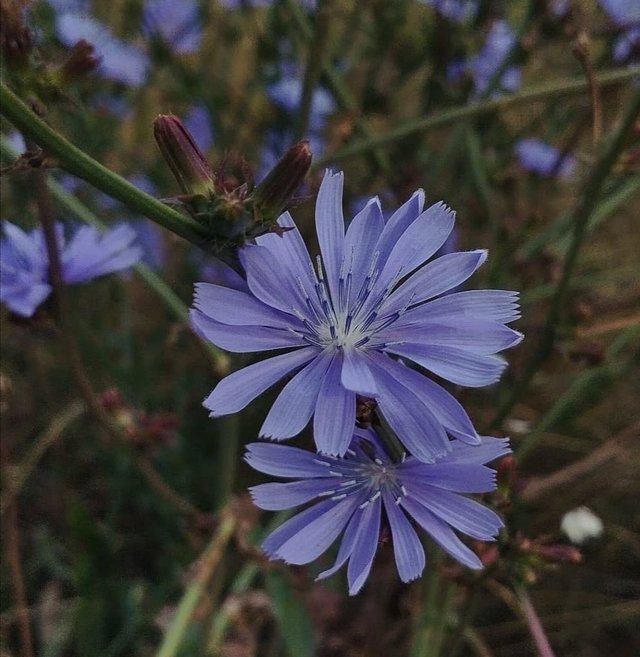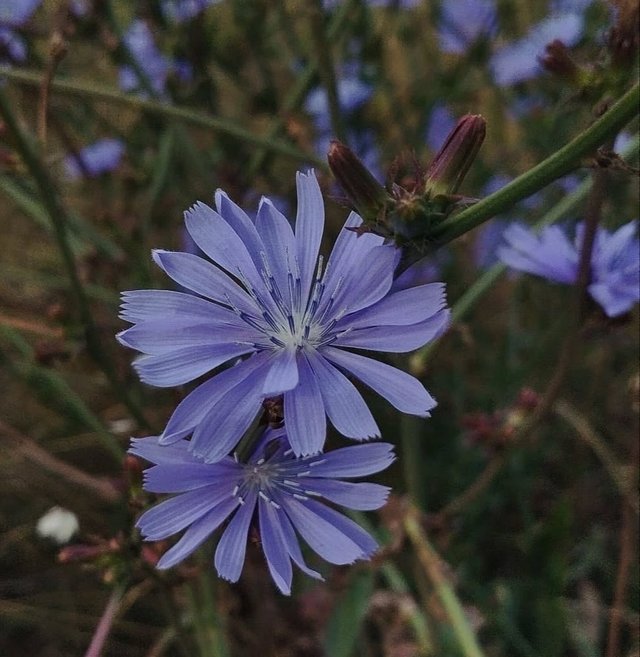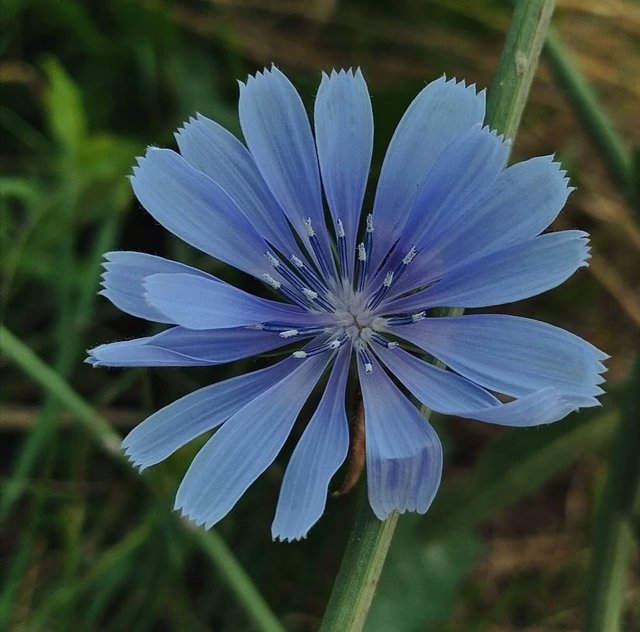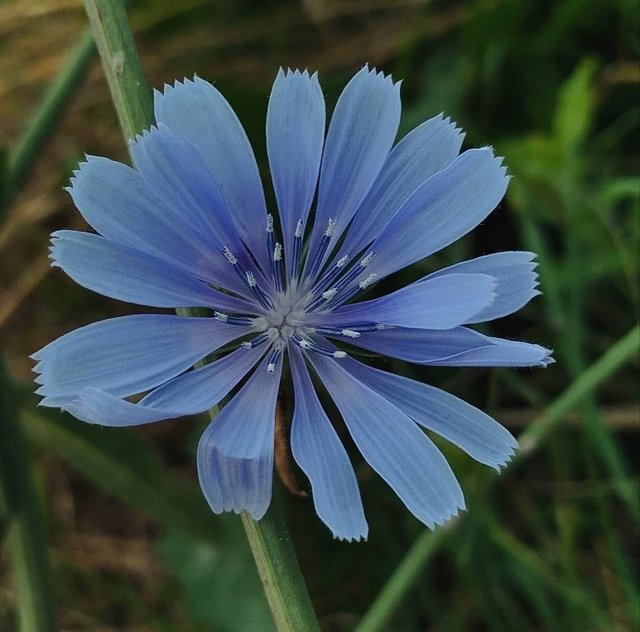So Amazing Chicory Flower
Chicory: A Versatile Herb of Flavor, Beauty, and Medicine
Chicory is a hardy perennial herb known for its brilliant blue flowers, deeply lobed leaves, and robust taproot. Native to Europe, it has become naturalized across North America, Asia, and parts of Africa, thriving along roadsides, in meadows, and disturbed grounds. Though often regarded as a humble weed by the uninitiated, chicory carries a rich legacy as a culinary, medicinal, and agricultural plant with a history spanning thousands of years.
Botanical Description
Chicory is a member of the Asteraceae family, a relative of dandelions, sunflowers, and lettuce. It typically grows to a height of 30 to 100 centimeters, though it can reach greater heights in favorable conditions. The plant has a tough, milky-white taproot that stores nutrients and moisture. Its stems are branched and rough to the touch, and its leaves vary by location on the plant—basal leaves are large and lobed, while upper stem leaves are smaller and clasp the stem.
One of chicory’s most striking features is its sky-blue flowers, which open in the morning and close by the afternoon, especially on sunny days. Occasionally, white or pink variants can be seen. Each flower head is composed of numerous strap-shaped florets, giving it a dandelion-like appearance. Blooming from summer through early autumn, chicory adds a delicate charm to wild landscapes.
Culinary Uses
Chicory has long been celebrated in the kitchen, especially in European and Mediterranean cuisines. The plant can be consumed in several forms:
Leaves: Young chicory leaves are often eaten raw in salads, especially in Italian and French cooking. They possess a slightly bitter, earthy flavor, which pairs well with sweet dressings or strong cheeses. Mature leaves can be cooked like spinach or braised to mellow their bitterness.
Root: The thick taproot is commonly roasted, ground, and brewed as a coffee substitute or additive, particularly in France, Belgium, and the southern United States. During times of scarcity, such as wartime, chicory root became a popular alternative to coffee due to its similar taste and caffeine-free nature.
| Device | cannon eos 700D |
|---|---|
| Lens | 55-250 zoom leans |
| Location | Bangladesh |




